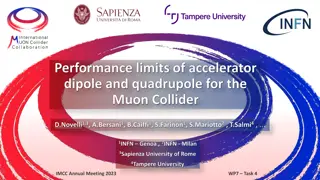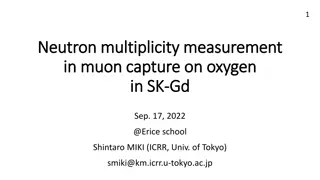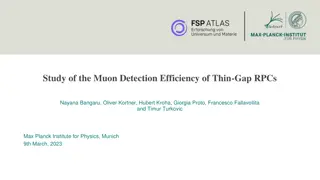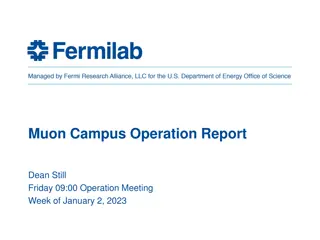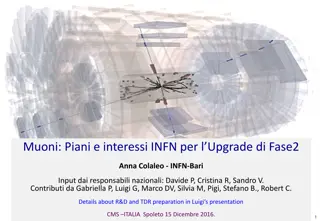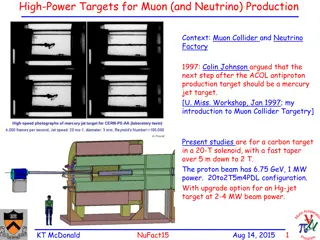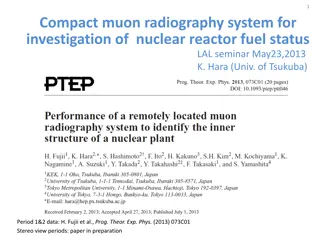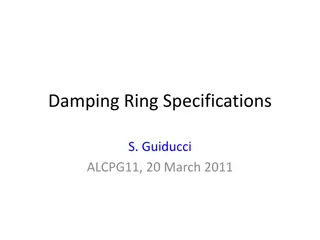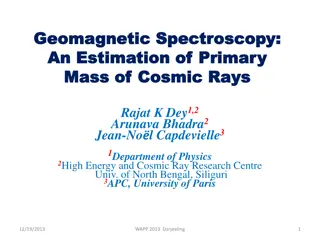muon acceptance
The Muon Acceptance in the KLOE Experiment is enhanced by a new straw tube module configuration with a compact radiator, higher density in the tracking region, and additional trackers utilizing the magnetic field. Various muon momentum spectrums and hits in different detectors at different momenta are analyzed to improve understanding.
Download Presentation

Please find below an Image/Link to download the presentation.
The content on the website is provided AS IS for your information and personal use only. It may not be sold, licensed, or shared on other websites without obtaining consent from the author.If you encounter any issues during the download, it is possible that the publisher has removed the file from their server.
You are allowed to download the files provided on this website for personal or commercial use, subject to the condition that they are used lawfully. All files are the property of their respective owners.
The content on the website is provided AS IS for your information and personal use only. It may not be sold, licensed, or shared on other websites without obtaining consent from the author.
E N D
Presentation Transcript
Geometry New straw tube module configuration: Straw tube diameter = 6 mm More compact radiator Higher density of KLOE tracking region Total mass 4.9 ton
Geometry Additional tracker upstream and external to KLOE exploiting its yoke magnetic field Detect incoming muons
spectrum from CC in ArgonCube spectrum stopping in ArgonCube exiting from ArgonCube entering in KLOE 47.7% 53.3% 44.2%
in KLOE in KLOE Hits in external tracker > 2 tracklets Hits in em cal. Hits in STT 94.8% 93.2% 59.6% 42.3%
moun p = 1 GeV external tracker ArgonCube KLOE tracking region
moun p = 3 GeV ext. trk. hits stt hits cal. hits
moun p = 1.4 GeV
moun p = 1.6 GeV
moun p = 0.43 GeV
moun p = 2.6 GeV
moun p = 1.8 GeV
moun p = 2.2 GeV
moun p = 2.3 GeV
moun p = 2 GeV
moun p = 3.3 GeV
moun p = 2.8 GeV




